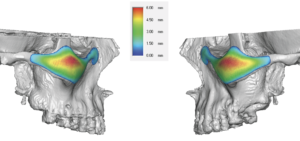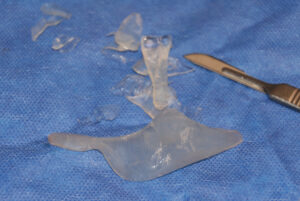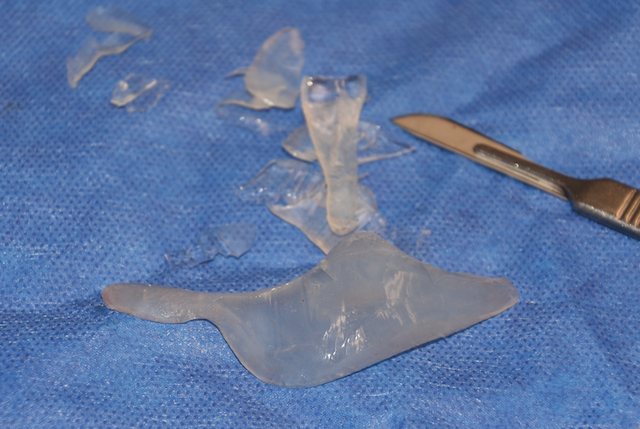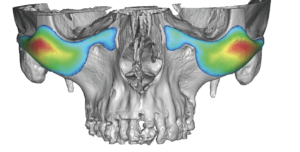
When designing a custom infraorbital-malar implant the goal is to create the desired aesthetic effects. But such designs are not an exact science and there is no known method to precisely create the desired result The surgeon has to use experience to make the design for its intended aesthetic effect. But the larger unknown variable is the patient’s reaction to the aesthetic outcome since it is something new on a face they have known for their whole life. Sometimes, even when the effect is the exact one achieved that the patient desired before surgery, they may decide afterwards that less of an effect is desired.
This is particularly relevant in the lower eye-cheek area which has a prominence as it curves around the face. The strength of this infraorbital-cheek curve or corner is usually how the patient determines whether the result is ’too strong or too weak’ from the implant. Thus this is typical the location of any modification done to the implant.

While ideally one would like to create custom infraorbital-malar implants that never have to be modified, and most of the time this is not needed, one has to be prepared that it may occasionally be needed. Patients can usually live with an implant that is just a bit too small but almost never when it it perceived as too big in the center of their face. Altering the prominence of the curve is what is usually needed and this can be done in a smooth manner that causes no external contour irregularities.
Dr. Barry Eppley
Indianapolis, Indiana





